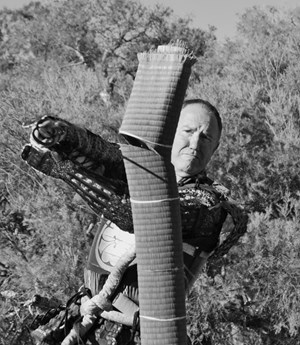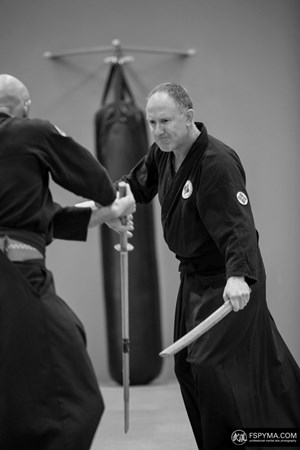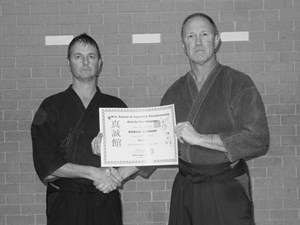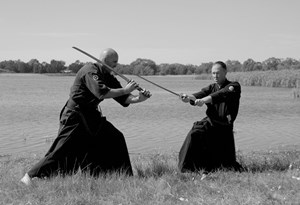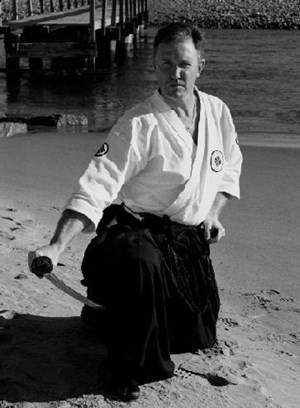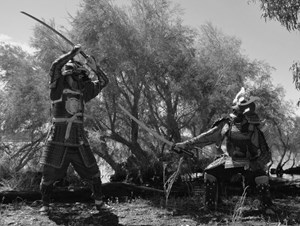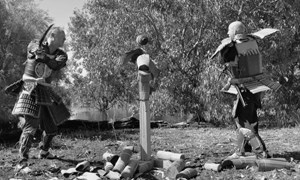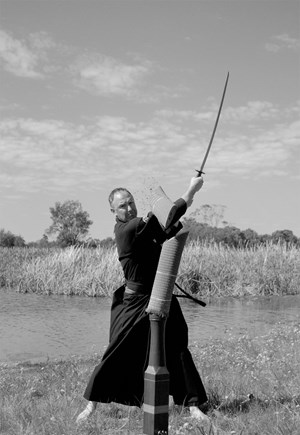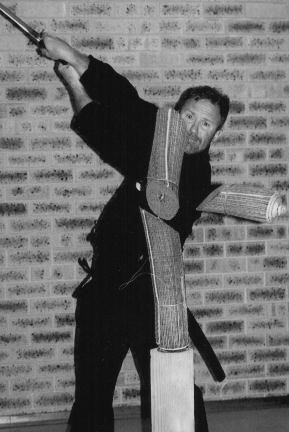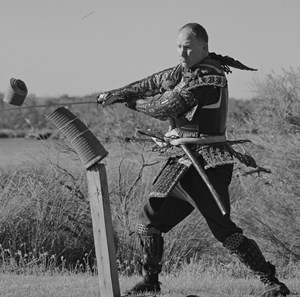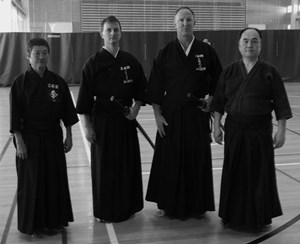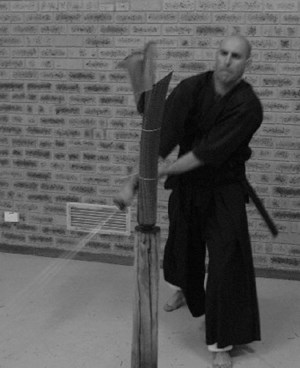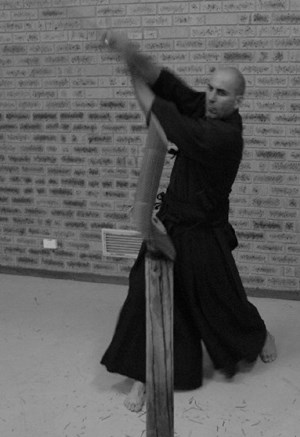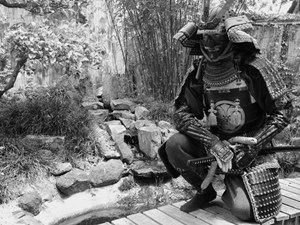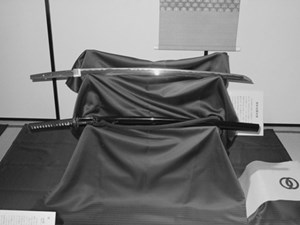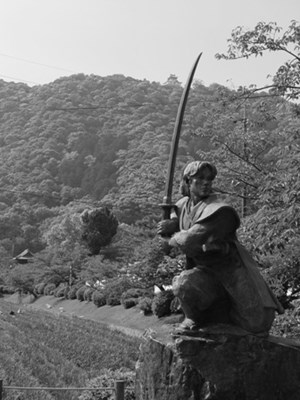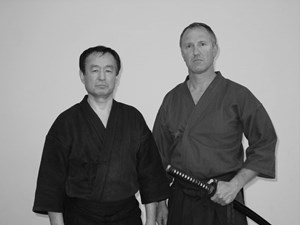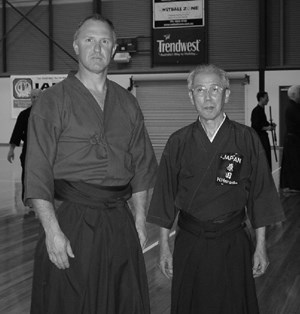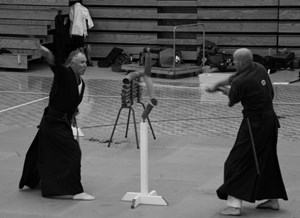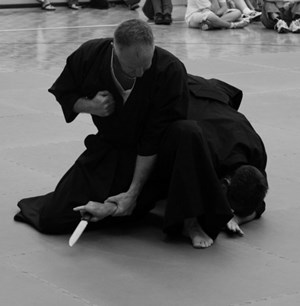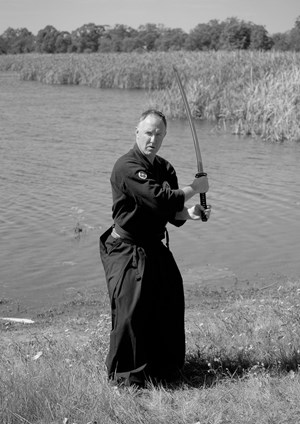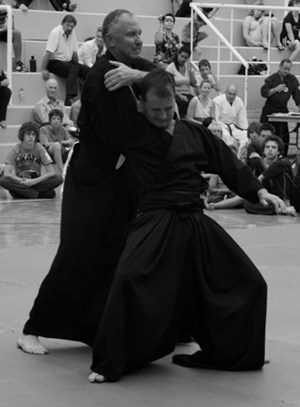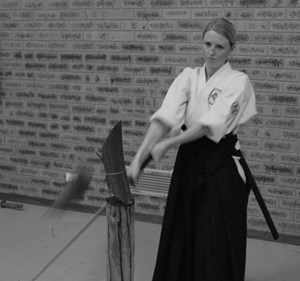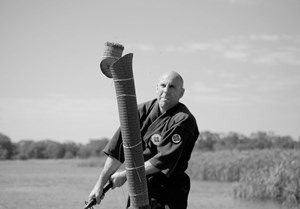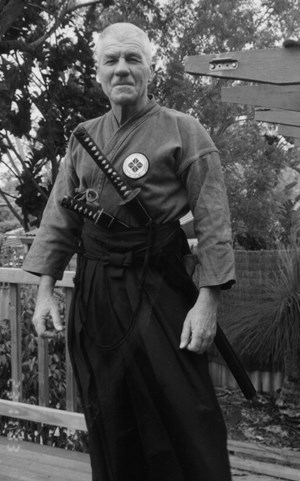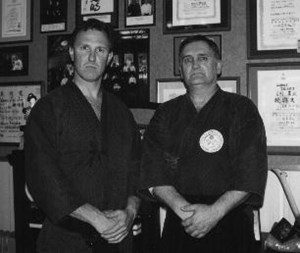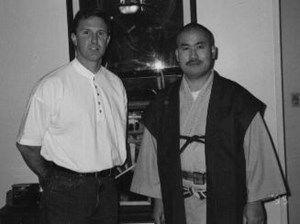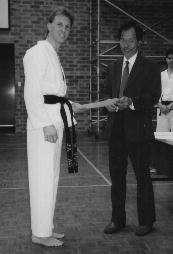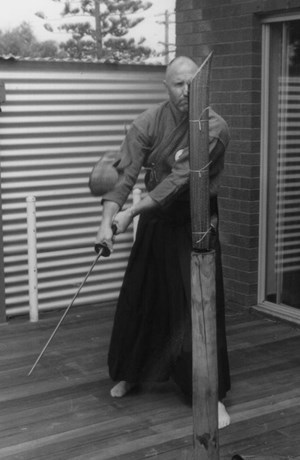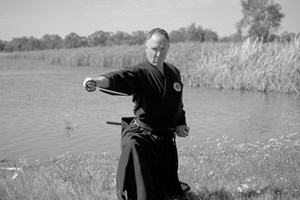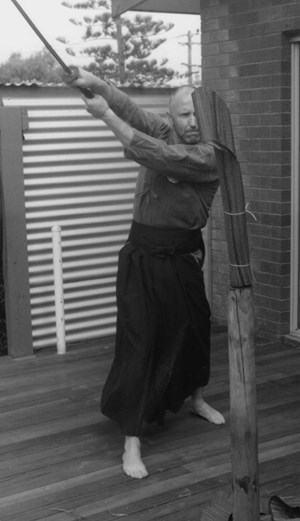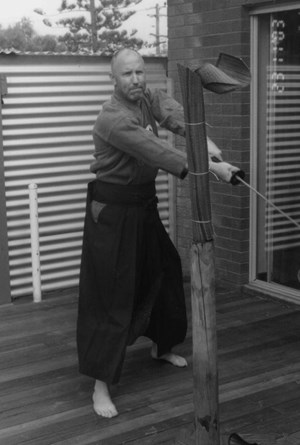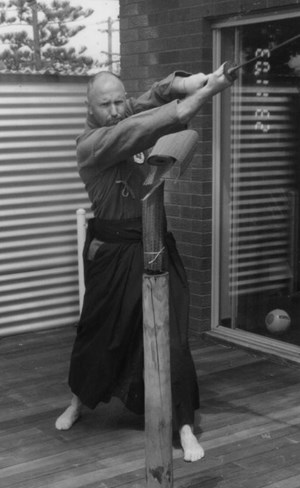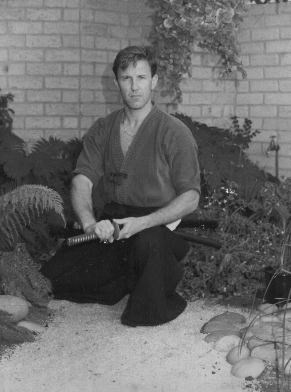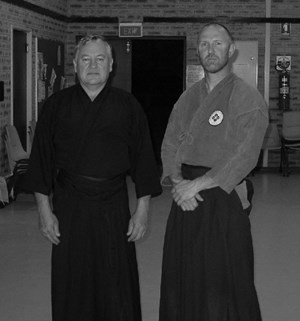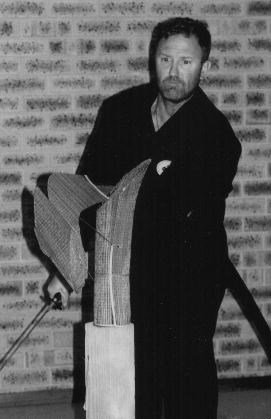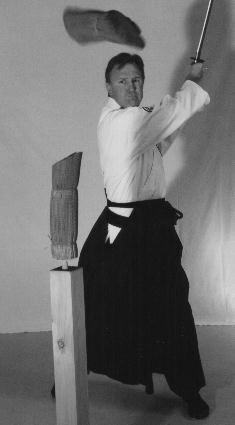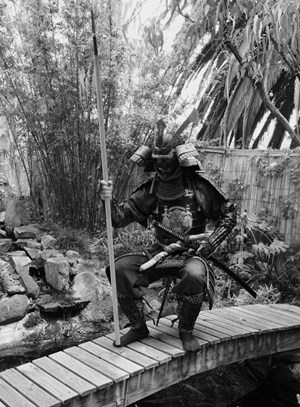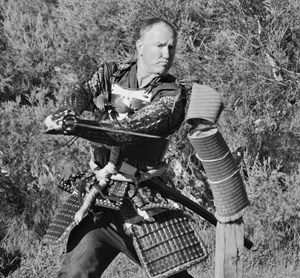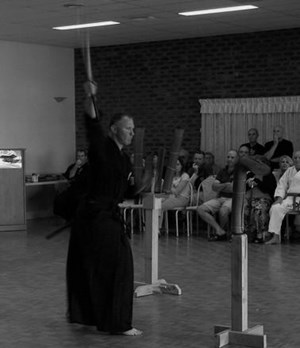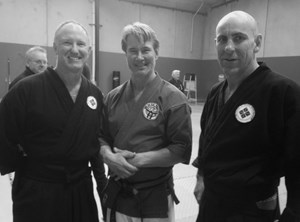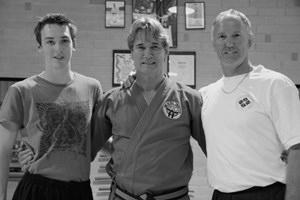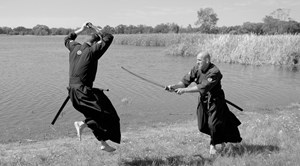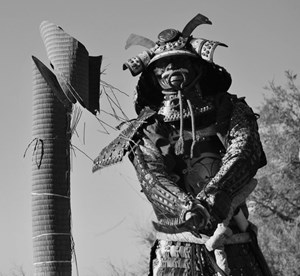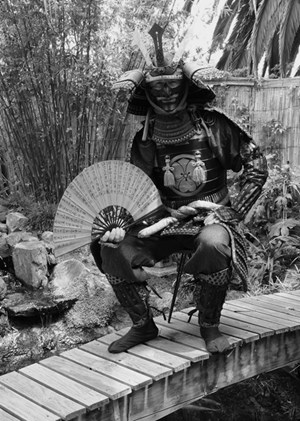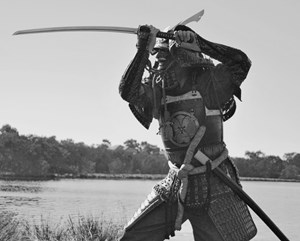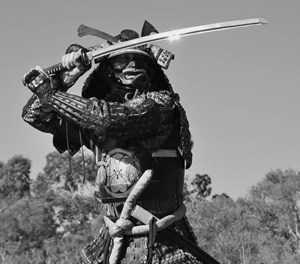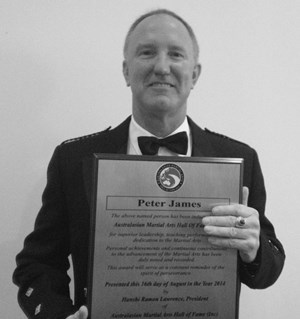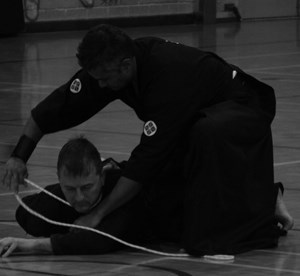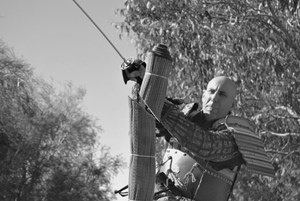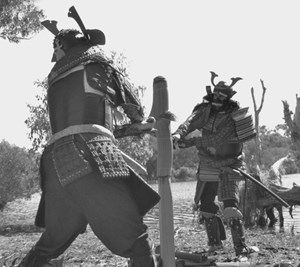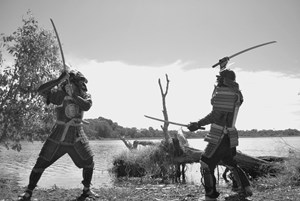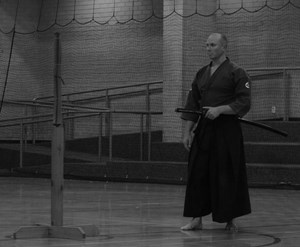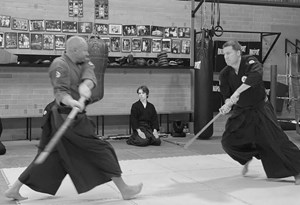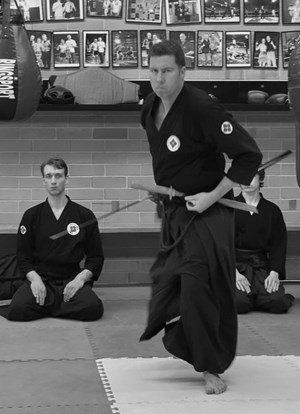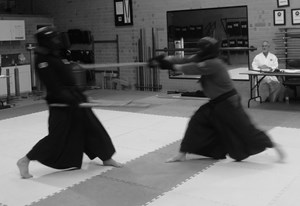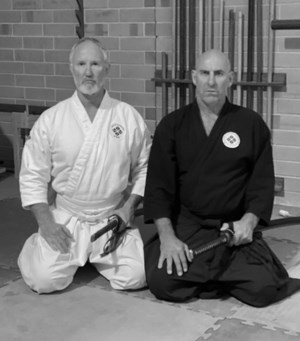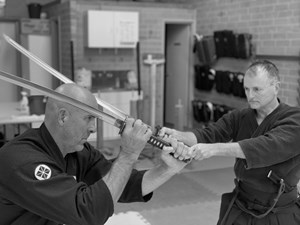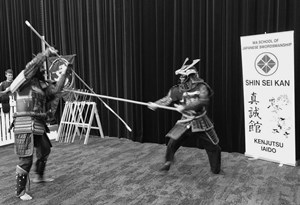Tameshigiri
1. Objective
The objective of this procedure is to ensure the safe use of live blades by club members during target (wara) test cutting (Tameshigiri) and Iaido.
2. Scope
The policy applies to the use of all live blades including swords, katana, tachi, short swords, wakisashi, knives and tanto, by members of the WA School of Japanese Swordsmanship in the Dojo or during any public demonstration of the schools techniques.
3. Specific requirements
3.1 Planning
- Students may only participate in Tameshigiri or Iaido when specifically nominated and approved by the Chief Instructor of the club.
- Tameshigiri or Iaido will only be conducted by the club when specifically organised by the Chief Instructor.
- All tameshigiri and Iaido will be overseen by a current instructor of the club.
- Tameshigiri and Iaido participants must be graded by the WA School of Japanese Swordsmanship to Kakyu or higher and have trained continuously at the club for a minimum of 6 months.
- Stands used for Tameshigiri must be approved by the Chief Instructor prior to use. Stands must be made of soft woods.
- Stand will be inspected by an instructor for condition prior to every tameshigiri event.
- Only the following wara is acceptable for Tameshigiri;
-
- Tatami matting or equivalent (soaked appropriately)
- Green bamboo or equivalent
- Paper
- Only live blades inspected and approved by the Chief Instructor can be used for tameshigiri or Iaido. Live blades must be designed specifically for the purpose of test cutting.
- All blades are to be visually checked by an instructor EVERY TIME they are to be used for tameshigiri and Iaido (this especially applies to the pin used to hold handles and blades in place on Japanese weapons).
- Tameshigiri and Iaido can only be conducted whilst a person with Senior First Aid Certification (St John Ambulance or equivalent) is in attendance for the entire period of test cutting.
3.2 Cutting and Iaido
3.2.1 In the Training Hall
All tameshigiri will be approached with the view that safety is the number one priority.
- Only students over the age of Eighteen (18) can handle sharp weapons or participate in tameshigiri and Iaido.
- All students training in the dojo must be made aware that a live blade has been drawn and tameshigiri or Iaido is about to commence.
- Students must not be within 10 feet of any other person whilst they are test cutting or practising Iaido (except where dual tameshigiri is approved by an instructor).
- Stands or any devise used to secure a target are not to be placed within 10 feet of walls or any other obstructions.
- Students below the rank of Shodan must be observed by an instructor whilst cutting.
- Any student that demonstrates unsafe use of the blade as judged by the observing Shodan, will be immediately stopped from test cutting or Iaido and under go additional training prior to engaging in future test cutting.
- Instructors who are observed by the Chief Instructor of ignoring a safety hazard will be counselled by the Chief Instructor with a view to ensuring continued safety for all concerned.
- All effort will be made to ensure water does not drop onto the floor around students performing tameshigiri. If water is dropped on the floor anywhere where a student is likely to step in the performance of tameshigiri, test cutting will halt and the water will be cleaned up.
- If matting starts to accumulate around the base of the target, tameshigiri will stop immediately to clear debris.
3.2.2 In Public
In addition to the above, the following will be observed.
- Demonstration in public will not be undertaken with out an investigation into the public liability responsibility for the club at any nominated venue. The Chief Instructor solely will make the decision to continue with the demonstration on this basis.
- Club members will not demonstration tameshigiri or Iaido in public, as a representative of the WA School of Japanese Swordsmanship until they have achieved the rank of Shodan as issued by the WA School of Japanese Swordsmanship and only then with the express permission of the Chief Instructor.
- Live blades will never be left unattended in public areas for any reason at any time.
- All weapons to be used in public will be checked for suitability and condition by at least two Shodan ranked club representatives prior to use.
- Japanese Sword etiquette (as taught by the school) will be observed at all times in terms of drawing and showing live blades in public.
- Tameshigiri or Iaido will not be performed if any member of the public is within 20 feet of the target.
- Any public demonstration will be terminated immediately if there is any breech of this safety policy.
3.3 Completion of Tameshigiri
On completion of tameshigiri the live blades will be checked, cleaned and rendered safe as the number one priority.
- Matting or cut material will be cleared and disposed of responsibly
- Water will be cleaned from the floor
- Stands will be checked, removed and stored appropriately
4. General
All students and instructors have a duty of care responsibility to follow these instructions and maintain a safe test cutting and Iaido environment for themselves, fellow students, visitors and the public.
5. Safety Analysis
The above procedures were designed to control the following hazards.
- Injury to the person performing tameshigiri or Iaido.
- Injury to people in the proximity of a person performing tameshigiri or Iaido.
- Damage of equipment or property within the environment of a person performing tameshigiri or Iaido.
- Damage to equipment used in the performance of tameshigiri or Iaido.
It is not safe to assume that because you are trained in tameshigiri or Iaido that people, material or equipment around you are safe without first investigating the circumstances and taking action to ensure that it is, in fact, safe.
6. Procedure for breech of policy
In general, if the Chief Instructor personally observes or is
told of a breech of safety that, in his judgement (that is was a
malicious or intentional act) endangers the safety of the student
or other people during tameshigiri and Iaido (or any other activity
within the school), a student will be asked to leave the school
immediately and asked not to return.
The following applies to non malicious safety breeches and apply
to a continuation of a similiar safety breech;
6.1 First Offence
Student will be counselled and retrained prior to returning to the activity.
6.2 Second Offence
Student will be reprimanded, counselled, and may be suspended from training then retrained, observed by the Chief Instructor as having learned the correct procedure, prior to returning to the activity.
6.3 Third Offence
Student will be asked to leave the school never to return.
